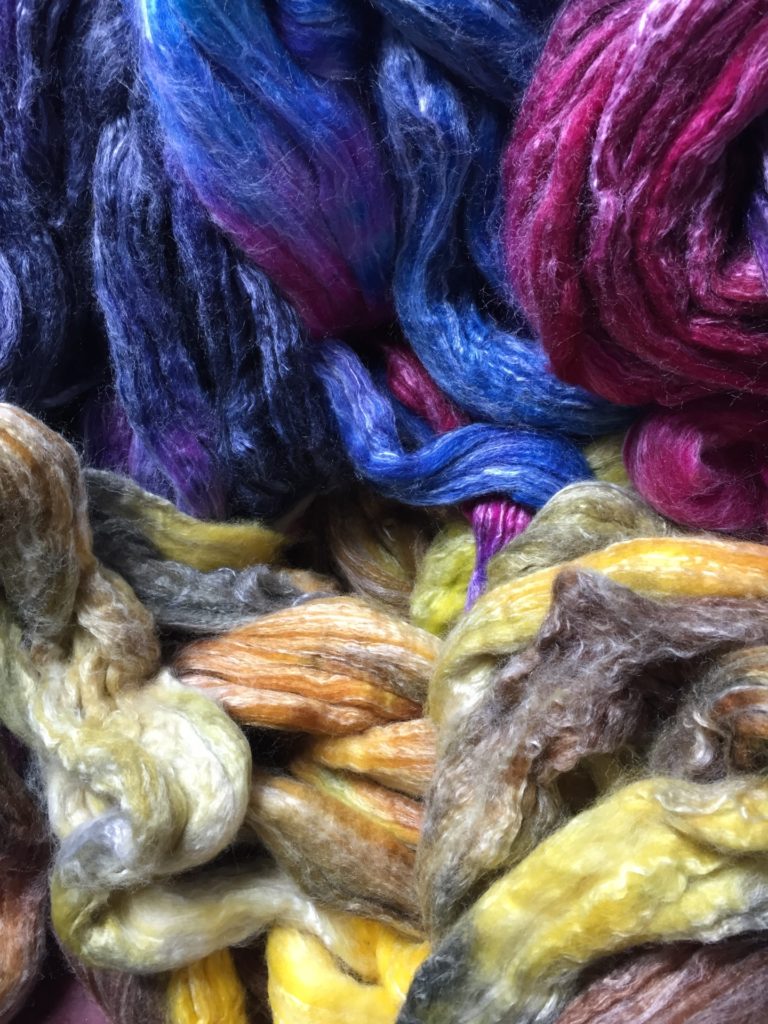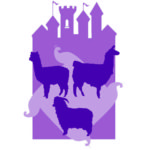How does one call yourself creative if you don’t try new things and experiment?
Well, a big show for me, Maryland Sheep and Wool Festival, is coming up and I always like to offer my customers something new.
A prefect moment to try something new.
In general, I have been a long time Roving girl. I love to make roving with lots of colors, and over the years in order to keep folks interested in my farm blends (usually wool, mohair and alpaca) I have spiced things up with lots of side ingredients. For example, I’ve done rovings with Cotton, Angelina, Camel, Firestar, and Silk added in for fun. In general I have not worked with top. I have felt like: I am a farm, I can produce something completely local and unique; why even go there, top is for folks that don’t have animals. Well, I just went there. I changed my mind. I decided the top itself is just a canvass. Why not, and there are so many interesting kinds of top out there, so I should try it.
I chose something that I couldn’t otherwise make. I decided to work in Bamboo. I found the Bamboo to be a creative inspiration. Bamboo will not take the dye the same way that all the other protein based animal fibers will (wool, mohair, alpaca, bunny, silk etc.). The protein fibers will saturate and the bamboo will only become lightly tinted. That sounded fun. I decided to go with it and completely explore this area of color and resist. Batik is generally thought of as a textile art, essentially the artist is changing the depth and saturation of color by controlling areas of less saturation. Frequently wax is used as the agent to block saturation. I would say it is a close cousin of tie-dye where physical pressure is used to prevent color saturation. Definitely worth noting, the artistic results are very different.
So I set out to dye the top full well embracing the idea that I wouldn’t be able to get full saturation on a blend with the bamboo. So go with it. I had a lot of fun and tried a lot of things. Naming a few things here to give you a flavor of the experiment: The fiber was vertical in the dye bath, horizontal in the dye bath; I dyed in on the stove, in the oven, outside over a fire; I used pressure barriers like poles and dividers, I used dye from a multiple of different sources. I even carded and blended some afterward. It was just time to see what would happen and have fun. I learned a lot. I really enjoyed the whole thing. I can’t wait to see what folks think. You’ll have to come on by and let me know.
Always, Karen


